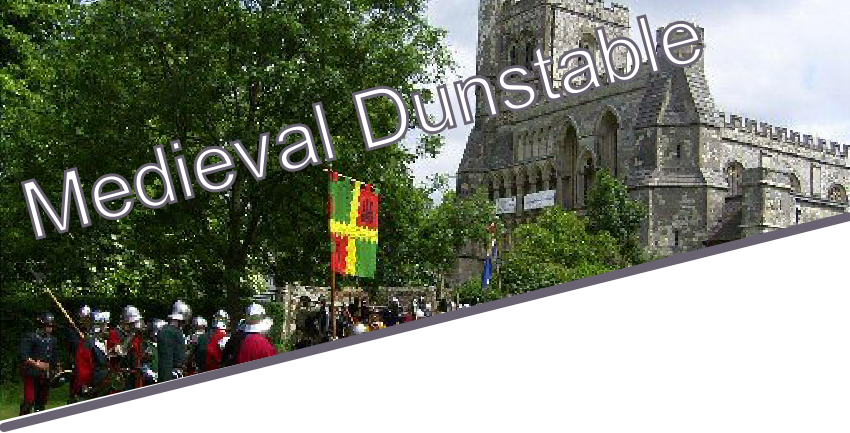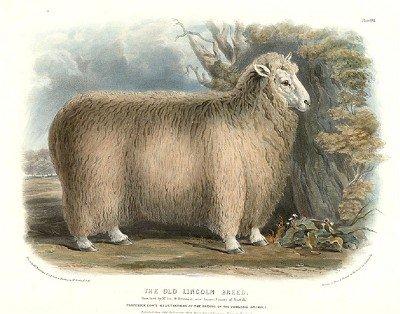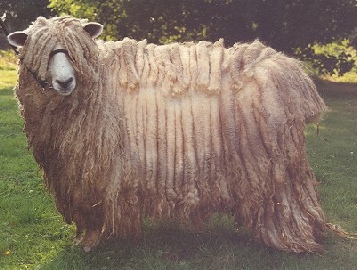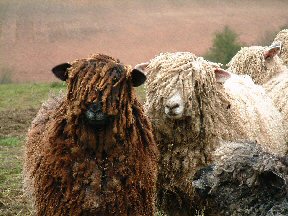
Medieval Dunstable© Webmaster Helen Mortimer Privacy Policy | Terms of Use



SHEEP AND THE WOOL TRADE
Author Joan Curran
In the Middle Ages wool was the most important export from England; it provided most of the revenue on which the King depended and reached its peak in the late 13th and early 14th centuries. In Dunstable there was a small, active group of merchants involved in the trade, one of whom, John Durant, was the wealthiest merchant in Bedfordshire when he died in 1297.
The Dunstable merchants were ‘ middlemen’, buying fleeces from farmers and arranging for their export to Europe. Large estates, many of them belonging to monasteries, sold their wool directly to merchants from Flanders and Italy, but the farmers and small producers needed a go-between to deal with the exporters on their behalf. As a result there grew up a number of regional centres where merchants would buy their fleeces, gather them together in what was known as a ‘collecta’ and arrange for them to be exported. The Dunstable collecta came from a wide area round the town was mainly exported through the Port of London.
The wool trade was strictly regulated and it was necessary to have a licence to export fleeces. Among the Dunstable names which appeared on the lists of licence holders were Stephen Angevin, Robert Brian, Henry and Richard Chadde, Richard Cook, William Fisher, Richard Young and, of course, John Durant. As well as buying and selling fleeces, John rented nearly 300 acres in Caddington and himself kept 100 sheep there. He was not the only man in the town to keep his own sheep or rent land elsewhere. Land was very limited within the boundaries of the borough and though some families had only two or three sheep, which they could probably keep near to where they lived, others had 10, 20 or even 40, and rented pasture in Caddington, Kensworth or Houghton Regis.
The merchants had to ensure that the fleeces were washed clean and thoroughly dried before being put into sacks, usually weighing 364 lbs., and these in turn were put into canvas containers known as sarplers.
Although the wool trade proved very profitable for the merchants involved, it was not without its hazards. Kings could, and did, impose swingeing taxes on them from time to time to raise money for their wars. On other occasions their wool was seized on the orders of the King without recompense. In the 1270s, for political reasons, the King imposed an embargo on the export of wool, but a small group of six men from Dunstable were among the lucky few who were allowed licences to keep trading, provided they did not send any wool to Flanders, more than in any other centre outside London.
Although the wool trade continued well after 1300 Dunstable is not mentioned in any of the surviving records after that date, but there is evidence that there were some woolmen, as they were called, into the 15th century. One of them was Laurence Pygot, who died in 1450: a brass in memory of him in the Priory Church describes him as ‘wolman’ and shows his merchant’s mark.

Old Lincoln Sheep
Author Jean Yates
The picture is claimed to be of the last Old Lincoln, from a flock in Norfolk.
There is a strong possibility that having researched our medieval sheep they were similar to the Old Lincoln
Hence a picture and a paragraph.
The current Lincoln Longwool is not only the biggest breed of sheep it also carries the greatest weight of wool.
The picture is from the book; “The Breeds of the Domestic Animals of the British Islands by Dr. David Low. These hand coloured lithographs were produced by Dr. David Low, professor of Agriculture at Edinburgh University in 1842. They were intended as a reference on selective breeding. Using a grant from Earl Spencer, Dr. Low set up an agricultural museum in Edinburgh. Royal Academy artist William Shiels was commissioned to produce a series of paintings of important breeds in Great Britain.”

A modern day ewe demonstrates why it is called a Lincoln Longwool.
The history of the breed can be found here on the Lincoln Longwool Sheep Breeders Association website; http://www.lincolnlongwools.co.uk/page3.htm
Up to 45lb of wool can be sheared from a Lincoln ram.
The picture above of a Lincoln Longwool is courtesy
Tom Booth.
The picture to the right of Lincoln Longwool Ewes
is courtesy of Steve Higgins and his
Tardebigge Lincoln Longwool Flock.

| Archaeology |
| Audio Guides |
| Education |
| Exhibitions |
| Events 2013 |
| Physic Garden |
| Priory History |
| Priory Churches / Lands |
| Town History |
| Virtual Tour |
| Website |
| Archaeology |
| Charters & Bylaws |
| Eleanor Cross |
| Famous People |
| The Fraternity |
| Friary |
| Guided Tours |
| History |
| Inns |
| Dunstable Treasures |
| Kingsbury |
| Middle Row |
| Royal Visits |
| Sheep & Wool Trade |
| The Town |
| Friary Archaeology |
| Bone Study |
| Friary |
| Annals Charters Valor Ecc |
| Archaeology |
| Churches and Lands |
| Guided Visits |
| Audio Guides |
| History |
| Monastic Life |
| Virtual Tour |
| The Augustinian Priory |
| The Canons Route |
| Bedfordshire |
| Buckingham |
| Derbyshire |
| Nothamptonshire |
| Hertfordshire |
| Leicestershire |
| Oxon |
| Priors |
| Annulment |
| History |
| Archives |
| Book Sales & Shop |
| Exhibitions |
| Guided Walks |
| Heritage Talks |
| Physic Gardens |
| Schools |
| Tourist Information Centre |
| Tea-room |
| Visits |
| Priory House Heritage Centre |
| Education |
| Knight |
| Search Results |